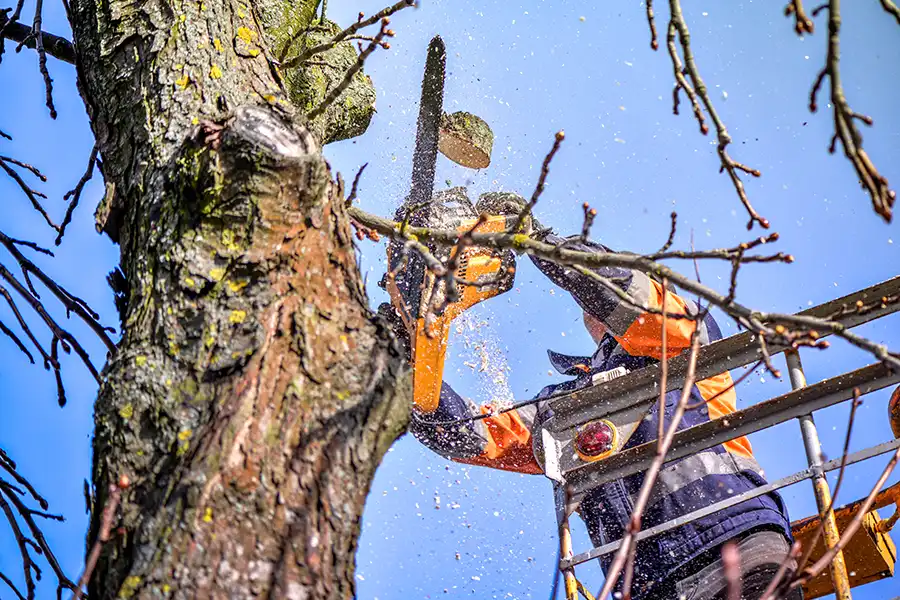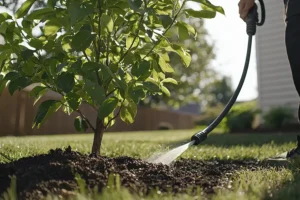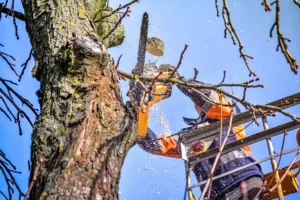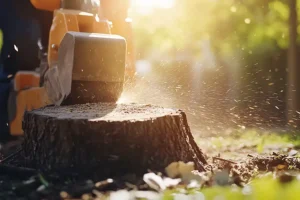As the crisp air of autumn sets in and the leaves begin to change color, it’s time to start thinking about fall preparation for your trees in the upcoming seasonal transitions. Fall is a critical time for tree care, as the shift in temperature and weather conditions can significantly impact the health and longevity of your trees. Proper care during this season helps ensure that the trees on your Granite City, IL, property remain strong and healthy throughout the winter, allowing them to bounce back with vibrant growth come spring. At Madcow Tree Service, we understand the importance of fall tree care and have put together this guide to help you get your trees ready for the colder months ahead. Here’s everything you need to know about preparing your trees for the fall season.
Prune Dead or Damaged Branches
One of the most important tasks during fall tree care is pruning. Overgrown or dead branches can become a hazard during fall storms, as heavy winds and rain can cause them to break off and fall. Pruning these branches not only helps reduce the risk of damage but also encourages healthy growth in the coming seasons. It’s best to prune before the colder weather sets in. This allows the tree to heal before winter, minimizing the risk of disease or pest infestations. However, avoid heavy pruning of live branches in the fall, as this can stress the tree and leave it vulnerable to winter damage. Focus on removing any broken, dead, or diseased branches to improve the overall structure and health of the tree.
Rake Up Fallen Leaves and Debris
While leaves falling to the ground is a natural part of the season, it’s important to rake them up regularly, especially around the base of your trees. A thick layer of fallen leaves can create an environment conducive to fungal growth, which could lead to issues for your trees over the winter. Additionally, if leaves are left to pile up, they can smother the grass and other plants in your landscape. Raking also helps prevent pests from taking up residence in the leaf litter, reducing the chance of insect infestations that could spread to your trees. Be sure to dispose of the leaves properly, either by composting them or disposing of them safely, to avoid any environmental harm.
Inspect for Pests and Diseases
Fall is an ideal time to inspect your trees closely for signs of pests or disease. As temperatures drop, pests such as aphids, spider mites, and scale insects often become more active, while fungi and bacteria can begin to spread. Catching problems early can make all the difference. Watch for warning signs such as discolored or curling leaves, peeling bark, visible insect activity, or unusual growths. These can all point to underlying issues that may worsen through the winter. Regular tree inspections can now prevent long-term damage and costly removal in the future. If anything appears to be off, please reach out to our certified tree care professional for a proper diagnosis and treatment plan. A little attention this season helps keep your trees healthy, strong, and ready to thrive when spring rolls around.
Fertilize Your Trees
Fall isn’t usually the season for heavy fertilization, but applying a slow-release fertilizer now can benefit your trees in important ways. This is especially helpful for younger or newly planted trees, which may require additional nutrients to strengthen their root systems before winter arrives. A fall application helps trees store energy in their roots, enabling them to withstand cold temperatures more effectively and recover with healthy growth in the spring. It’s not about pushing new growth—it’s about supporting what’s already there and setting your trees up for success. Be sure to choose the right type of fertilizer for your specific tree species and local soil conditions. When applied correctly, fall fertilization is a simple step that can make a big difference in your trees’ long-term health and development.
Preparing Trees for Winter Storms
Winter storms can put a lot of stress on trees, especially if they haven’t been properly prepared. Before the first frost arrives, take a moment to inspect your trees for any signs of weakness, focusing on large or mature trees that may be more susceptible to damage from snow, ice, or strong winds. Look for dead limbs, cracks, or branches that hang too low. These can become hazardous when winter weather hits. If you’re unsure about the condition of your trees, consider hiring a professional tree service like ours to assess their health and structure. In some cases, selective pruning or thinning may be recommended to enhance stability and promote better airflow, thereby helping to prevent breakage. Taking these steps now can reduce the risk of costly damage later.
Get Ready for Fall Seasonal Changes with Madcow Tree Service
Fall tree care is crucial for maintaining the health and vigor of your trees as they transition into winter. Taking the time to prune dead branches, apply the right fertilizer, and check for signs of pests can help your trees stay in good shape now and come back even stronger in the spring. Each step you take plays a role in their long-term health. If you’re unsure where to start or need assistance with seasonal tree care, Madcow Tree Service is here to help. Our team offers expert tree trimming, pest prevention, and more to keep your trees in Granite City, IL, looking their best throughout the year. Call us today at 618.288.9663 to schedule a consultation or learn more about our services.







